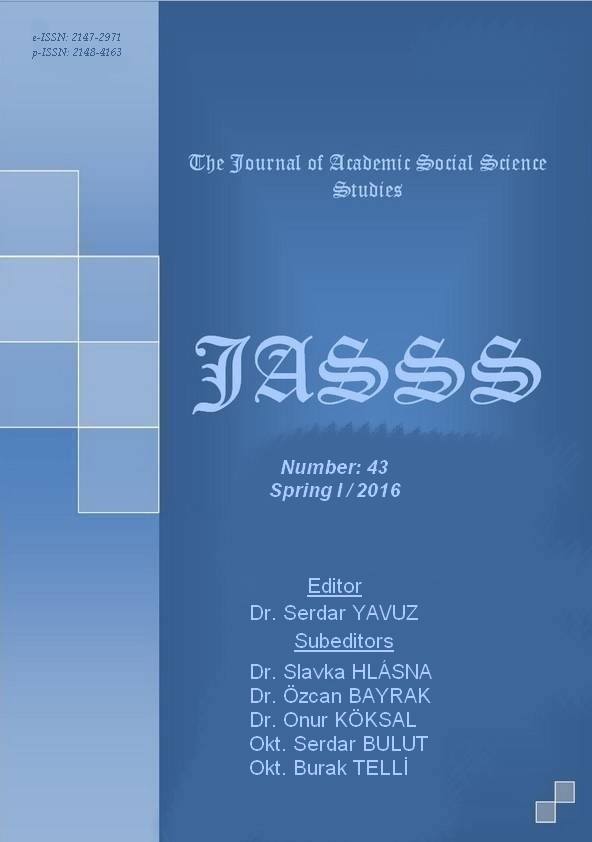Author :
Abstract
Yirmili, aynı vezinde yirmi mısradan oluşan ve en az iki bentten oluşan tek kafiyeli nazım şeklidir. Klâsik edebiyatta bu nazım şekline çok fazla rastlanmamaktadır. Bu nadir nazım şeklinin bir örneği de Eskicumalı Ahmed Hamîd’in Dîvân’ında bulunmaktadır. Fâ’ilâtün fâ’ilâtün fâ’ilâtün fâ’ilün kalıbıyla yazılan ve üç bentten oluşan bu manzumenin her bendinde yirmi mısra bulunmakta olup her bendin sonundaki iki mısra aynen tekrar etmektedir. Beş asır boyunca Balkanlarda hâkimiyet kurmuş olan Osmanlı Devleti zamanında bu coğrafyada birçok şair yetişmiştir. Eskicumalı Ahmed Hamîd de 19. yüzyılda Bulgaristan’da yaşamış bir şairdir. Eskicumalı Ahmed Hamîd’in, oğlu Esad tarafından derlenen Dîvân’ındaki şiirlerinden Alevî-Bektâşî meşrebine yakın olduğu anlaşılmaktadır. Hakkında tezkirelerde bilgi bulunmayan Eskicumalı Ahmed Hamîd’in hayatı hakkında en önemli bilgi Dîvân’ın sonunda oğlunun verdiği bilgilerdir. Tespit edilebilen tek nüshası Millî Kütüphane’de 06 Mil Yz FB 272 arşiv numarasıyla kayıtlı olan Eskicumalı Ahmed Hamîd Dîvânı, 71 yaprak, rikayla, krem cedid kâğıda siyah mürekkeple yazılmıştır. Başlık ve sözbaşları siyah, eski ebru cilt içindedir. Eskicumalı Ahmed Hamîd Dîvânı’nda 18 kaside, 2 mesnevi, 2 kıt’a, 19 murabba’, 2 muhammes, 18 tahmis, 2 müseddes, 1 müsebba’, 1 mütessa’, 1 yirmili, 4 beyit, 125 gazel bulunmaktadır. Bu yazıda Eskicumalı Ahmed Hamîd’in hayatı, Dîvân’ından ve diğer kaynaklardan elde edilen bilgiler ışığında ele alınacaktır. Sonrasında Dîvân’ı tanıtılacak ve Dîvân’ında bulunan yirmili nazım şekliyle kaleme alınmış bir şiirine yer verilecektir.
Keywords
Abstract
Twenty lined, is a verse form which consisting of twenty verses in the same meter and one rhyme is the only method which consists of at least two bent. In the classical literature is not seen too much of this verse style. This is a rare example of a verse form is also available in the Diwan of Eskicumalı Ahmed Hamid. The poem is consisting three bent which has twenty verses and the poem is written by verse type fâ'ilâtün fâ'ilâtün fâ'ilâtün fâ'ilün. This poem every paragraph consisting of two lines of the same paragraph at the end of each paragraph is repeated. During the five centuries Ottoman Empire establish dominance in the Balkans who have been brought up many poets in this region. Eskicumalı Ahmed Hamid is a poet who lived in the 19th century in Bulgaria. From the poems in the diwan of Eskicumalı Ahmed Hamid which is compiled by his son Esad understood to be close to the Alevi-Bektashi disposition. There is no information about life of Eskicumalı Ahmed Hamid in the tezkires. The most information about the Hamîd is at the end of the diwan provided by his son. There is one copy of Diwan of Eskicumalı Ahmed Hamîd which may be identified in the National Library numbered by 06 Mil Yz FB 272. Diwan has 71 sheets and written by rika which is a writing type written in black ink on cream paper cedid. Title and first words are written by black ink. Diwan is in the old marbled skin. In this article will be discussed in the light of the diwan and obtained from other sources about Eskicumalı Ahmed Hamid’s life. After, will be introduced his Diwan and will be given a poem written in the verse form twenty lined.





